Who is Mnemosyne?
Mnemosyne is the goddess of memory and the mother of artistic inspiration. She was a female titan who had children with Zeus, the God of thunder and sky. She was an important figure to the Greeks that there were rivers and fountains dedicated to her or had her name on it.
In addition, the Greeks also placed a great significance on memory as a fundamental gift which differentiated man from animals. To them, memory served not only to remember, but to also reason and draw or foresee the future, based on the experience of the memory.
Examples of Mnemonic Devices
Mnemonic devices are actually techniques a person can use to help them improve their ability to remember something. In other words, it’s a memory technique to help our brain better encode and recall important information. To put it simply, it is a shortcut that helps us associate the information we want to remember with an image, a sentence, or a word.
The first technique would be acronyms. Acronyms are created from the first letters or groups of letters in a name or phrase. These can be used as mnemonic devices by taking the first letters of words or names that need to be remembered and developing an acronym or acrostic. An example of an acronym would be LOL which translates to Laugh Out Loud.
The next technique would be The Method of Loci. It is a mnemonic device that dates back to Ancient Greek times, making it one of the oldest ways of memorising. Using the Method of Loci is relatively easy. First, users would need to imagine a place with which they are familiar. For instance, if they use their house, the rooms in their house become the objects of information they would need to memorise.
Another example is to use the route to work or school, with landmarks along the way becoming the information needed to memorise. To summarise The Method of Loci, it is to go through a list of words or concepts needing memorisation and associate each word with one of the locations. Proceed in order so that retrieving of all of the information in the future would be easier.
The third device would be rhymes. A rhyme is a saying that has similar terminal sounds at the end of each line. Rhymes are easier to remember because they can be stored by acoustic encoding in our brains. For example, a personal favourite of mine:
Roses are red,
Violets are blue,
They way that you kiss me,
WHEW!
The next device would be Chunking & Organization. Chunking is simply a way of breaking down larger pieces of information into smaller, organised “chunks” of more easily-managed information. For instance in Singaporean telephone numbers – 8 digits are broken down into 2 parts, with 4 digits each. As such, placing larger quantities of information into smaller containers helps our brains remember more, and more easily.
Organising information into either objective or subjective categories also helps. Objective organization is placing information into well-recognized, logical categories. Trees and grass are plants whereas a cricket is an insect. Subjective organization is categorising seemingly unrelated items in a way that helps you recall the items later. This can also be useful because it breaks down the amount of information to learn.
Visual imagery is the last device and is great way to help memorise items for some people. For instance, it’s often used to memorise pairs of words such as green grass, yellow sun, blue water, etc. The Method of Loci, mentioned above, is a form of using imagery for memorisation. By recalling specific imagery, it can help us recall information we associated with that imagery.
My 2 Scents ( unpleasant & pleasant memory)
The scent that evokes an unpleasant memory would be my mother’s perfume. This is because getting that particular perfume takes a lot of effort. This is because to get the perfume, my mother and I would have to travel back to Indonesia back to our perfumist to get at least 30 bottles to bring it back to Singapore. It is a hassle because I would always have to carry half of the bulk items into my luggage as well. Often times, it is pure luck that we get through Singapore’s immigration but often times, we find ourselves talking our way through “smuggling” the items in.
The scent that evokes a pleasant memory would be my lemongrass aromatherapy roll-on. This is a pleasant memory as I got a really awesome massage in Bandung and my whole body smelled like the roll-on liquid. In addition, after the massage, my mother and I ended up purchasing a few boxes of the roll-on to bring home to Singapore. Till this day, we regularly have these boxes mailed to out home solely because we love the scent and experience we had from it.
A rough form of the scents
Mother’s Perfume
– Sharp edges, spiky, bendy
Lemongrass Aromatherapy
– Wavy, grounded, thicc
Recycled Plastic Art.
Recycled plastic art are created using recyclable plastic bottles, Tupperware as well as many other containers made out of plastics. They are then cut and carved into sculptures and can also be shaped to take new forms such as that of plants, flowers and other decorative items.
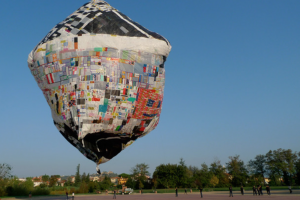
Another form of reusing plastic wastes would be to turn it into a hot air balloon. Argentinian creator Tomas Saraceno created an art installation that features the ubiquitous plastic bag, generally made from low-density or high density polyethylene. The giant recycled plastic exhibition is essentially an enormous hot air balloon made of used plastic bags. Titled “Becoming Aerosolar”, the balloon is functional, in theory, and solar powered when heated by the rays of sun, the plastic bags float upwards.
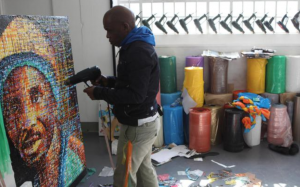
Another way of utilizing plastic waste would be paintings. African artist Mbongeni Buthelezi specializes in an unconventional medium. He is known for transforming everyday, unassuming plastic wastes into sought-after works of art. He heats up pieces of plastic with a heat gun, then applies the melted form onto a black plastic background that doubles as a canvas. By layering and positioning bits or recycled plastic, he is able to create incredible portraits and mosaics that almost resembles oil paintings.
Final thoughts on starting this project.
I am curious as to finding out how I am suppose to manoeuvre different types of plastics and I would like to know how malleable different types of plastics are and how well are they able to retain the form that I have given them, I am also interested and excited to see which of the mnemonic devices I can apply for my final works!

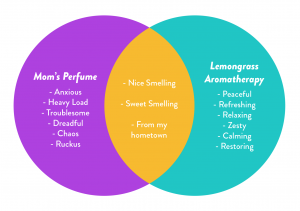
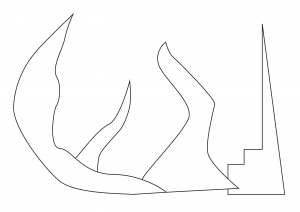
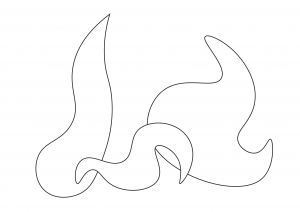


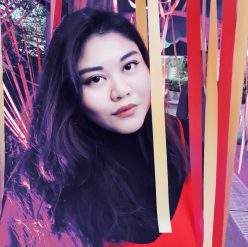
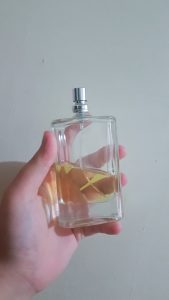
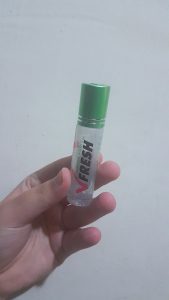
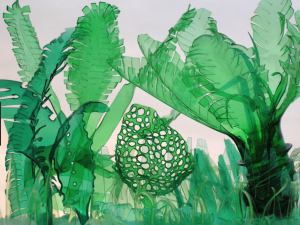
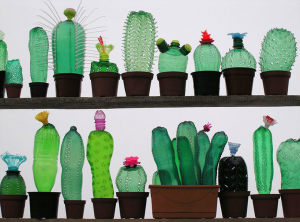
Thanks for sharing about your frequent harrowing experience “smuggling” in your scents Nadi! Hope it’s not too risky posting it here on OSS.. 😉 I think you did a pretty good job with your plastic experimentation and conveyed your 2 scents really well in your Scent Model.